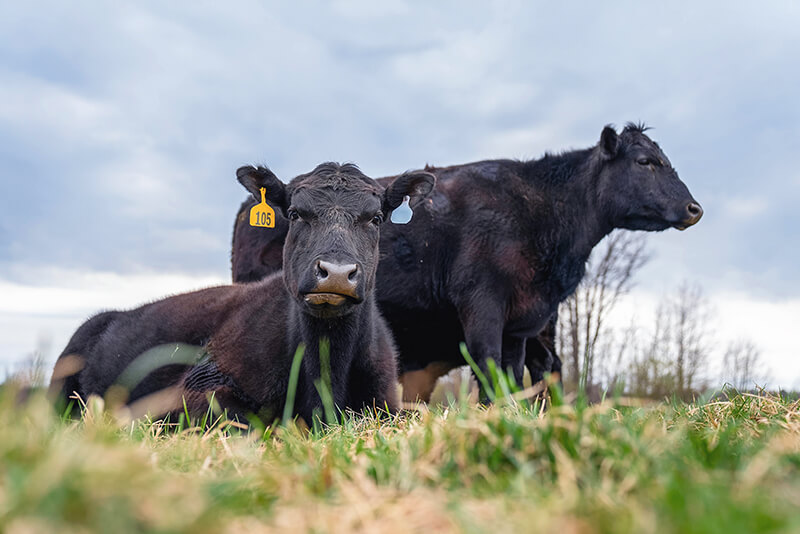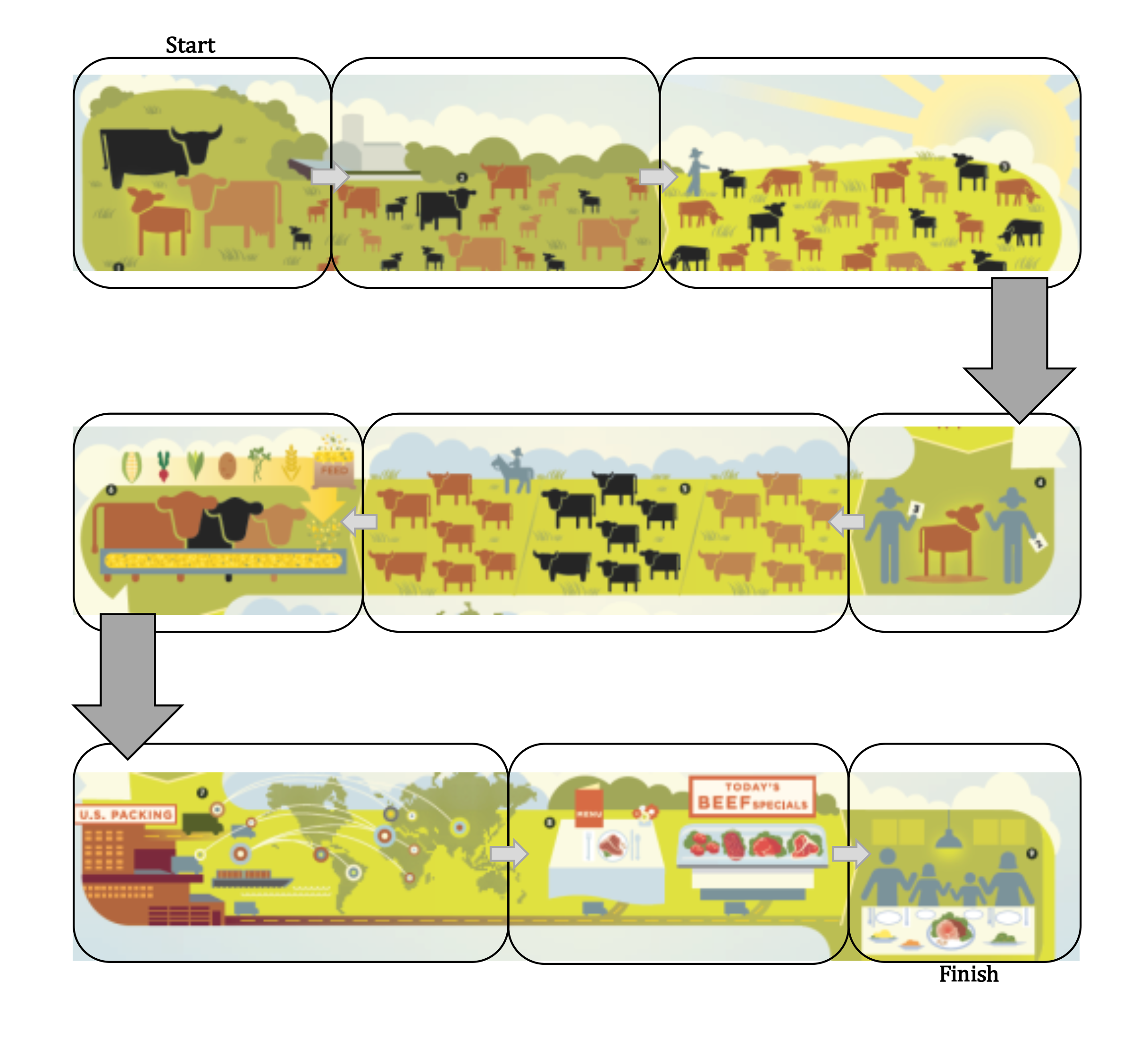The Remarkable Ruminant
In this lesson, students will follow the farm to fork process of producing beef, learn how cattle and other ruminants convert grass into nutrient-rich foods such as milk and meat, discover ways cattle recycle food waste, and identify careers in the beef cattle industry.

Background
Lesson Activities
Recommended Companion Resources
Credits
Author
Katy Wright | Arizona Beef Council
Acknowledgements
- Beef lifecycle image in Activity 1 is from the explorebeef.org website.
- Remarkable Ruminant worksheet in Activity 2 is from the Iowa Beef Council.
Standards
National Content Area Standards
- Career & Technical Education
- AFNR (Grades 6-8): Animal Systems Career Pathway
- AS.01.02: Assess and select animal production methods for use in animal systems based upon their effectiveness and impacts.
- AS.01.03: Analyze and apply laws and sustainable practices to animal agriculture from a global perspective.
- AS.02.01: Demonstrate management techniques that ensure animal welfare.
- AS.08.02: Evaluate the effects of environmental conditions on animals and create plans to ensure favorable environments for animals.
- AFNR (Grades 6-8): Animal Systems Career Pathway
- Social Studies – Geography
- Geography Standard 15 (Grades 6-8): How physical systems affect human systems.
- Objective 1: The characteristics of a physical environment provide opportunities for and impose constraints on human activities.
- Geography Standard 14 (Grades 6-8): How human actions modify the physical environment.
- Objective 3: The physical environment can both accommodate and be endangered by human activities.
- Geography Standard 15 (Grades 6-8): How physical systems affect human systems.
- Science
- MS-ESS3: Earth and Human Activity
- MS-ESS3-3: Apply scientific principles to design a method for monitoring and minimizing a human impact on the environment.
- MS-LS2: Ecosystems: Interactions, Energy, and Dynamics
- MS-LS2-1: Analyze and interpret data to provide evidence for the effects of resource availability on organisms and populations of organisms in an ecosystem.
- MS-LS2-2: Construct an explanation that predicts patterns of interactions among organisms across multiple ecosystems.
- MS-ESS3: Earth and Human Activity



